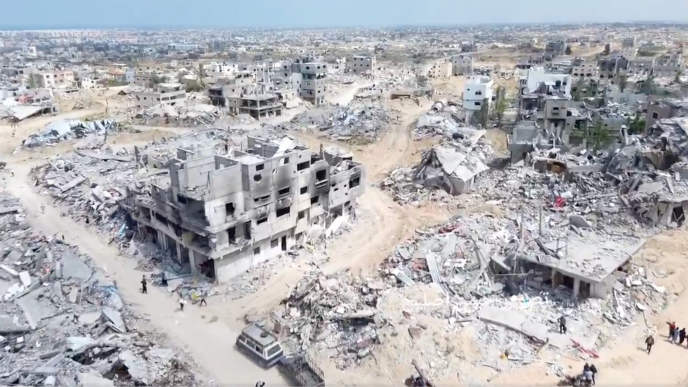REPORT: Israel Issues Final Warning for Gaza City Evacuation as Full-Scale Invasion Nears Amid Peace Deal Pressure
As Israeli forces close in on Gaza City, the Israeli military has issued what it calls a “final opportunity” for Palestinians to flee, warning that those who remain will be treated as “terrorists and supporters of terror.” The warning comes as the Israeli Defense Forces (IDF) claim near-total control of the Netzarim Corridor, a central route that effectively splits the Gaza Strip in two.
According to Israeli Defense Minister Israel Katz, the move is aimed at isolating Hamas in Gaza City. “This is the last opportunity for Gaza residents who wish to do so to move south,” Katz stated, while adding that the military operation will proceed regardless of ongoing cease-fire talks. “We are preparing for all possibilities,” he said, referring to both the goal of eliminating Hamas and freeing the remaining 48 Israeli hostages.
While Israel urges civilians to flee south, questions remain over where exactly Palestinians are expected to go. Southern Gaza is already overwhelmed with displaced residents, limited shelter, and ongoing Israeli airstrikes. Humanitarian agencies have warned repeatedly that no area of Gaza is truly safe.
Reports from Gaza’s civil defense indicate that 36 people were killed in Gaza City on Wednesday alone, underscoring the dangers of attempting to evacuate amid constant shelling. Human rights organizations, including Amnesty International and Human Rights Watch, have condemned the evacuation as forced displacement, warning that treating civilians who remain as combatants violates international law.
The United Nations has described the situation as a “looming catastrophe,” and the International Criminal Court is reportedly reviewing whether the siege and bombardment meet the legal definition of genocide, given the high civilian death toll, widespread displacement, and destruction of civilian infrastructure, including hospitals and churches.
The siege of Gaza City comes amid growing scrutiny of Israeli military actions. Multiple churches, including the historic Greek Orthodox Church of Saint Porphyrius, have been struck during the conflict, drawing international condemnation. Israel claims the strikes target Hamas operatives using civilian sites as shields, but religious leaders and humanitarian groups insist these attacks violate protections under international law.
With access to clean water, electricity, and medical care all but vanished in northern Gaza, the implications of a full siege could be devastating for the tens of thousands who remain, many of whom are elderly, disabled, or unable to evacuate due to lack of transport.
As the violence escalates, pressure is mounting on all parties to accept a U.S.-backed cease-fire plan spearheaded by former President Donald Trump. The 20-point proposal includes:
An immediate cease-fire
The exchange of all remaining hostages
A staged withdrawal of Israeli forces from Gaza
The disarmament of Hamas
The establishment of a transitional government under international supervision
The proposal has been backed by several Arab states and is reportedly being reviewed by Hamas leadership. However, Israeli Prime Minister Benjamin Netanyahu has signaled that military objectives will not be paused for diplomatic talks. “The only path forward is victory over Hamas,” Netanyahu said this week.
With the IDF declaring that anyone left in Gaza City may be considered a combatant, the stage is set for what may be the bloodiest phase of the war yet. Humanitarian groups warn that labeling civilians as enemy combatants risks mass civilian casualties and undermines the principle of distinction — a core tenet of international humanitarian law.
The UN estimates that over 1.8 million Palestinians — more than 80% of Gaza’s population — have already been displaced since the conflict reignited nearly two years ago. Entire neighborhoods have been flattened, and vital infrastructure has been decimated.
If a full-scale invasion proceeds, it could mark a significant escalation in a war that is already being examined under the lens of potential war crimes and crimes against humanity.




